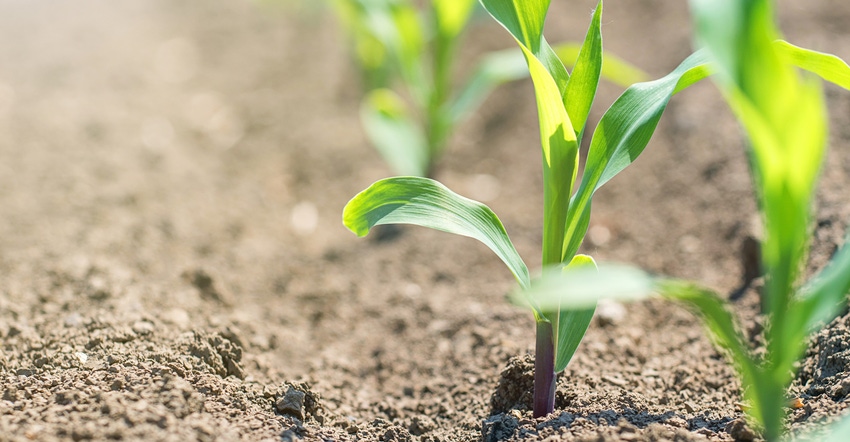September 9, 2019

By Clint A. Nester
First, we need to realize we are in a declining sulfur environment in the soil. Levels of 10 years ago averaged 30-plus parts per million soluble sulfur in our soil tests, and today we are seeing levels of 5 to 8 ppm.
These low levels are a concern, as sulfur is a secondary nutrient — right behind nitrogen, phosphorus and potassium in crop needs. It is increasingly important that as your yields continue to climb, you are going to need to find a way to supplement available forms of sulfur to your corn, wheat and alfalfa crops. It will also be a factor in soybean production.
Declining sulfur levels have been brought about by clean air regulations from more than 20 years ago that stopped the release of sulfur into the atmosphere. The good news is, it had a major effect on reducing acid rain. The bad news is, farmers are no longer receiving the needed sulfur supplied by the acid rain.
When coal is burned, the coal contains sulfur and is released as sulfur dioxide in the smoke. Today’s regulations require “scrubbing” that sulfur out of the smoke before it can be released. To accomplish this, the smoke is run through a calcium bath, forming calcium sulfate, or gypsum. Nearly 5,000 tons per day are produced down on the Ohio River by power plants, and it has been landfilled in the past due to lack of demand.
What are the options for applying sulfur?
We have been recommending and applying supplemental sulfate with ammonium sulfate (AMS), but we do not appear to be keeping up with today’s sulfur needs.
The other challenge with ammonium sulfate is if you increase the rates to build the sulfur back in the soil, you are also greatly acidifying the soil, causing need for lime more often. This acidifying effect comes from the hydrogen ions in the ammonium portion of AMS.
Sulfate can also be supplied with gypsum (calcium sulfate). We have noticed nice increases in sulfate levels where we apply gypsum, and those levels are holding at three to four times higher, two to four years after application. Studies have suggested that if you apply sulfur in the sulfate form (gypsum) in the fall, it will all be gone by the time the crop needs it in the following spring. We have run multiple plots in conjunction with Ohio State University that show that while the sulfate in gypsum is very soluble, it does in fact, stick around for multiple crop seasons. Similar to other nutrients, soils with lower cation exchange capacity (CEC) tend to leach sulfur more quickly.
Sulfur’s availability to crops
How and when is sulfur available to crops? It is important to keep in mind that crops can only use the sulfate form sulfur, not elemental sulfur. The breakdown of elemental sulfur to sulfate can take an undetermined amount of time, as it is a microbial process. It depends on the soil health, rainfall, soil temperature, and the solubility and fineness of the elemental sulfur product used.
Once elemental sulfur converts to sulfate, it is no different than other sulfate sources. There would be no way to know when to apply elemental sulfur at “just the right time” so it becomes available at the time your crop requires it. Also, with the variations of soil conditions that are present as different soil types within your fields, you could expect that the conversion time for elemental sulfur could vary greatly from one soil type to another.
The current sulfur situation in the soils is only going to get worse due to reduced atmospheric deposition. We have seen many instances of sulfur deficiencies, especially in lower-CEC soils. You need to have a plan on how you will handle it.
Cost should be considered, as well as all the soil interactions outlined above. At the very least, up-to-date soil tests will show you if your sulfur “gas tank” is running on empty.
Nester is a certified crop adviser with Nester Ag LLC. Reach him at 614-946-0330 (cellphone) or 419-658-8866 (office).
You May Also Like




